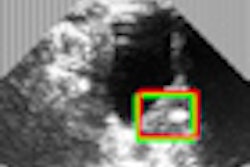Tuesday, November 29 | 3:50 p.m.-4:00 p.m. | SSJ07-06 | Room E353C
Researchers in New Orleans have concluded that duplex Doppler ultrasound is a useful tool for monitoring pancreatic allografts.Since 1996, more than 22,000 pancreas transplantations have been performed in the U.S. But to date, no reliable clinical or readily performed laboratory tests that directly relate to the function of transplants have been established to diagnose complications, said presenter Dr. Juan Martin Gimenez from the Ochsner Clinic Foundation.
Although there are reports in the literature studying the use of the resistive index for evaluating pancreatic allografts, no definitive consensus as to resistive index guidelines has been formed, Gimenez said.
The research team decided to study once again the usefulness of duplex Doppler ultrasound in pancreatic allografts, developing a methodology that allows technologists to routinely visualize and evaluate them. The methodology also allows for quantitative assessment of the value of the splenic artery resistive index in normal transplants, as well as in the most common conditions that affect pancreatic survival, he said.
Using their duplex Doppler ultrasound protocol, the researchers were able to successfully evaluate 96% of the pancreas transplants in their study. Duplex Doppler ultrasound -- in conjunction with the resistive index parameters -- helps differentiate normal allografts from those with complications, especially venous graft thrombosis and rejection, according to Gimenez.
"Given that ultrasound is a useful tool for monitoring pancreatic allografts, we recommend screening examinations," Gimenez said. "Based on our findings, we suggest that ultrasound exams be performed in the early postoperative period, whenever complications are suspected and routinely at six-month intervals for early detection of complications."




















